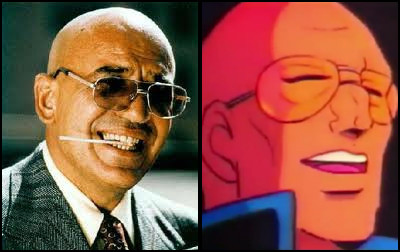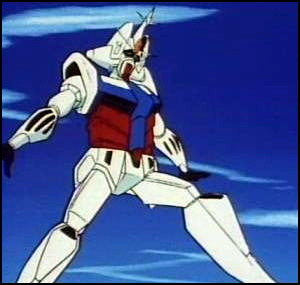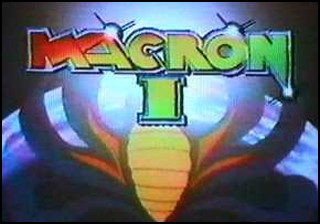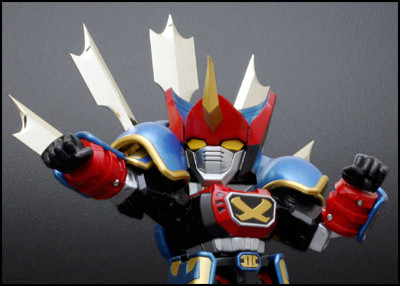The Mike Toole Show
Etranger in an Etrange Land
by Michael Toole,
I've spent the past week engaging in a proud Japanese New Year's tradition - 大掃除, “osoji,” or good old spring cleaning. In Japan, they get their spring cleaning on early, in the run up to the big New Year's parties—it fits in nicely with the classic New Year themes of purification and renewal. Looking around my office, I found myself ankle-deep in electronics, tools, model kits, DVDs, musical instruments, and other detritus, so I rolled up my sleeves and got to work.
Part of this work involved weeding my pretty substantial DVD collection—around 1200 discs at the moment. If you're a major collector in a fairly small living space, this is something that should be done regularly. Not only is it good for jettisoning crap you don't care about any more (are you really gonna watch that Flint The Time Detective VHS tape again? Think hard!), it's good for paring down redundancies. For example, this time I found myself extracting old DVD-only releases of Studio Ghibli titles like Nausicaä and Whisper of the Heart, since they'd been supplanted last year by blu-ray/DVD combo packs. I also pulled old ADV Films releases of the Dirty Pair OVAs (superceded by Nozomi's superior mastering), incomplete Geneon sets of Fafner and Hellsing Ultimate… and GoShogun: The Time Étranger.

Despite being a pretty oddball film based on a largely unknown super robot series, GoShogun actually got released on DVD twice. The first time was a badly-authored subtitled-only deal, which came out in 2000. But just a few years later, Central Park Media had another crack at the feature-length OVA, releasing a better-looking DVD that also sported a brand new dubbed version. Almost a decade later, it's hard to justify keeping both. The thing is, GoShogun’s tale is an interesting one to tell, so tell it I shall.

If you've been reading my column for a while, you've probably figured out my esteem for Japan and its awesome robot cartoons. Gigantor, Voltron, Grendizer, Tranzor Z, that one robot that looks kinda like a football player… all awesome, the stuff of childhood dreams. But back in 1981, silly robot cartoons were in an awkward transitory period. Notable creators like Yoshiyuki Tomino had shifted away from the fanciful, colorful robo-heroes of the 1970s, creating “real robot” hits with grittier plots, more realistic mechanical designs and settings, and heroes valiantly dying all over the place. The super robot wasn't out of favor, not really, but it was looking for a new spot in the pecking order. One studio, Ashi Pro, decided to repackage a traditional super robot with a few novel twists—unusually complex, smart characters, plus a uniquely lighthearted tone in many episodes. The ensuing 26-episode TV series was turned over to a kid named Kunihiko Yuyama (you may not recognize his name, but he's been directing Pokémon longer than some of you have been alive), and in the summer of 1981, we got GoShogun.
I can't picture how an undiluted, unedited GoShogun might've played out on American TVs, because it would've been impossible. Protagonist Kenta is a smart kid with a neat robot pal named OVA, but he spends the first episode dealing with his father's suicide, watching a Kojak lookalike machine-gun a gang of unknown assailants, and being unceremoniously tossed in with a trio of confident, wisecracking robot pilots. In GoShogun's brave new world, you see, the scientific game has been changed by the arrival of an asteroid containing the mysterious element called “bimmler.” Bimmler is this show's version of Getter Rays or ALLOY.-Z, a super-scientific McGuffin that allows for flight, teleportation, and of course, laser swords. Kenta's dad, rather than turn his bimmler findings over to the diabolical crime syndicate Docooga, sets off a suicide bomb. But it's OK, because he's transferred his consciousness into the supercomputer that runs the flying, teleporting super-battleship Good Thunder, home to the mighty robot GoShogun!
Sounds neat, huh? It doesn't stop there. To remind us all that the friendly supercomputer is, in fact, Kenta's dead dad, it's named FATHER. (A similar supercomputer that works for the Docooga syndicate is called MOTHER. What do you make of that?) The three robot pilots break away from the hot-blooded/smart guy/fat guy formula, instead giving us a hot-blooded guy (Shingo), an escaped convict (Killy), and a complicated and intriguing girl named Remy. The character of Remy, cooked up by screenwriter Takeshi Shudō, embraces some robot hero stereotypes—she's a tough-talking ex-soldier and has rotten luck with the opposite sex!—but takes the risk of making her not just one of the pilots, but the main pilot of TriThree, the weird in-between robot that's formed from the pilots’ ships before GoShogun itself is summoned. GoShogun, unsurprisingly, is an awesome robot with a variety of weapons, including both blades and firearms. The team is led by Savalas, a guy who looks exactly like Telly Savalas. No, I'm not joking. He's ostensibly a colleague of Kenta's dead scientist father, but I like to think that the character was, in fact, Telly Savalas himself.

The only thing better than the heroes of GoShogun are the villains. We don't learn much, early on, about the shadowy Docooga and its boss, the secretive Neo Neros, but we get plenty of time to know his three lieutenants, who open each episode squabbling over who gets to be the next to kick over the Good Thunder's sandcastle and swipe the precious bimmler inside. The effusively man-pretty Leonardo di Medici Bundol is pompous and flamboyant, announcing his arrival in combat with loudspeakers blaring “The Blue Danube.” Eyepatched Suegni Cuttnal is a pill-popping schemer with a bird on his shoulder, making him seem more than a little like a pirate captain, and the hulking Yatta la Kernagul, a blue-skinned clone, is a violent battlefield general who keeps a robot buddy around as a punching bag. These three start off as fun bad guys to root against, but then Yuyama and Shudo work some magic—they humanize them. As the series progresses, we learn that Bundol is an incurable romantic who loves beauty; Cuttnal is a mama's boy suffering badly from PTSD; and Kernagul is a devoted husband who's really only using Docooga as a get-rich-quick scheme to launch his fast food restaurants.

In the meantime, we're treated to a bunch of awesome robot fights, some saucy (and ultimately harmless) flirting between Remy and the boys on Team GoShogun, and plenty of gee-whiz moments for young Kenta. The show's got numerous great moments—one of the best is in episode 22, when the writers tackle the “real robot vs. super robot” argument by having GoShogun square off against this oddly familiar-looking guy above. The crowning moment would come in the show's home stretch, when the trio of popular villains finally figure out that Docooga is screwing them—and join the heroes. Great stuff!
The thing is, the GoShogun TV series is only half of the story. It gets more interesting when you look at what happened once Ashi Pro got the thing sold to overseas partners. In some markets, changes were modest—the show was fairly popular in Italy, where it was retitled Gotrinitron, for example. But for the English-speaking market, GoShogun was eagerly snapped up by the dynamic duo of Shuki Levy and Haim Saban. They acquired the series when another anime called Voltron was all the rage, so they took the same approach; in order to meet syndication requirements, they messily mated GoShogun with Srungle, a marginally tolerable but extremely ugly series from MIC that was about as different from GoShogun as you could get. Using the magic of cheap video transitions and hacky editing, GoShogun and Srungle were sold as a single TV series—Macron-1!

Macron-1 did about as well as you'd expect a series Frankensteined up from Japanese animation by a pair of Franco-Israelis for the purpose of entertaining American children to do, which is badly. There were no toy deals coming out of the gate, so Saban had to try something different to hook viewers in America and Europe. Well, let's see—what was big on TV back then? Why it was Miami Vice, which built on a successful buddy cop formula by using stylish direction and employing the hottest music on the charts, so clearly Macron-1’s success would involve pop music!
This is a pretty typical example of the end result, right here. The battle would begin, little Kenta (called Nathan in the dubbed version) would spout “Let's hit ‘em with our best shot!” and then your speakers would fill with the sounds of Imitation Pat Benetar. Not surprisingly, this didn't do much to engage children, so instead of dwelling on why Saban thought this was a good idea, let's contemplate Miami Vice music composer Jan Hammer ripping shit up on a keytar.
Done? Good. Weirdly enough, while the US got a chopped up, bowdlerized version of the original series, Europe also got Macron-1—but theirs didn't have any Srungle in it. Consequently the European cut is a better adaptation, but it's still resplendent with weird edits and video transitions, and lots of name changes. Look guys, you can call him “Dr. Shegall” all you want, but you're not fooling me—that's Telly Goddamn Savalas! Ultimately, while Saban has spent the past couple of decades creating a billion-dollar entertainment empire, GoShogun was never part of their success story.
The GoShogun TV series and Macron-1 are only two halves of the story. The other other half is GoShogun: The Time Étranger! (I know that adds up to 150%. Work with me please.) Released in 1985 as a coda to the series, Time Etranger (helpfully similar to the chronologically adjacent Time Stranger—animation ace Kōji Morimoto worked on ‘em both!) goes about as far in the opposite direction of the super robot formula as possible. Instead of a triumphant recounting of the GoShogun team's well-earned peace, it's an examination of what hardened combat vets do once the war is over and the robot's flown away to its home planet. Most of the team has gone on with their lives, but when Remy gets in a bad car wreck on the way to a reunion, they find themselves standing awkwardly around her sickbed, pondering their own mortality as they gaze upon hers.
As for Remy, we learn that the war inside her head never really ended—with no external enemy to fight, instead she struggles with her own ideas of life and death and fate. Comatose at the hospital, she feverishly dreams of being trapped in an ominous town, harried by its fanatical inhabitants to give in to fate and let herself die, and only aided by her old teammates. Despite a pretty modest budget and workmanlike direction by Yuyama, Time Etranger is full of good writing and great vocal performances (Mami Koyama as Remi really is one of the best in the business—modern fans know her as Balalaika in Black Lagoon!). It really is a surprisingly effective and affecting little film. I was amused, but hardly surprised, to discover that I had two copies of it in my library. (Hell, if you count the UK-only dub by Manga, which includes a Remy with an outrageous French accent, I had three!) Justin talks even more about it here.

Back in Japan, GoShogun's gone, but not forgotten. There have been a couple of DVD sets issued, and the robot and its tough heroes regularly appear in Super Robot Wars games. Every few years, a fancy GoShogun toy for adult collectors shows up, too. The DVD I've got, the good bilingual one, isn't too difficult to find these days, but if you want it, get it now—with the publisher dead for several years, the DVDs will eventually vanish from resellers’ shelves, returning to the same obscurity that shrouds the original in these parts.
Did you see Macron-1 on TV? Heck, did you see GoShogun: Time Etranger on TV? (It ran on ImaginAsian several years back. ) What do you remember about it? Barring that, are you plagued by doubles, reprinting, and other tomfoolery in your anime and manga collection? Talk about it in the comments!
discuss this in the forum (23 posts) |